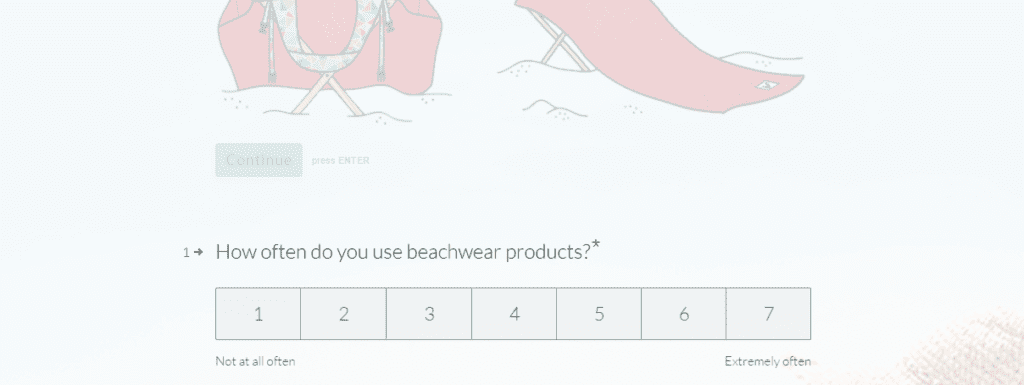Knowing who your customers are is key to any business. Demographics such as age, gender, and socio-economic status can help with that. However, raw numbers don’t paint the whole picture. To really understand your audience, you need to get inside their heads, which is where psychographics comes in.
Psychographic segmentation gives you a fuller picture of your audience’s desires and needs. With that information, you can provide better services and improve your marketing efforts. In this article, we’ll talk about what this strategy is and how to use it in marketing.
Let’s get inside your customers’ heads!
Subscribe To Our Youtube Channel
An Introduction to Psychographics
The easiest way to define psychographics is to compare them with demographics. While the latter focuses on the sociological aspects of your audience, the former is more interested in the reasoning behind why your customers act a certain way.
For example, here’s what a basic demographic profile might look like:
- Male
- Age between 25 and 35 years old
- Single
- Interested in video games, saving money, and weight loss
- Household income $50,000 per year
Many businesses rely on this kind of data to make marketing decisions. Right off the bat, demographics give you an idea of what products or services your target customers might be interested in buying. In the above example, that could include video games, money management courses, and more.
The problem is, demographics often don’t paint a full picture. Psychographics can give you more personal insight into the same target customer’s state of mind and desires. A psychographic profile for the customer persona above might list the following:
- Interested in video games as a way to socialize
- Spends a lot of time on social media reading about weight loss
- Is not interested in strict diets, but wants to get into exercising
- Shows a lot of concern for their appearance
A lot of businesses are taking advantage of psychographics to improve conversion rates and tap into new markets. Porsche, for example, divides potential customers into six psychographic profiles, including ‘top gun’ (ambitious thrill-seekers) and ‘fantasists’ (they see the car as a sort of escapism).
Developing psychographic profiles of your customer base will let you know who to market each of your products or services to. It can also help you run segmented campaigns and, hopefully, target audiences you might not have considered before.
How to Use Psychographics to Improve Your Marketing Efforts (In 3 Steps)
While psychographics might not be as number-centric as demographics, that doesn’t mean there isn’t data involved in the creation of this type of customer profile. What’s different is how you gather and utilize this information. Here’s how it works.
Step 1: Gather Psychographic Data Through Analytics and Interviews
Demographic data should give a first insight into who your key audiences are. With help from modern analytics tools and enough visitors, you can learn the basics of who is most interested in your products and services:

This data is the foundation on which you want to build your psychographic profiles. Let’s say, for example, analytics show your primary audience is males between 18-25 located in the United States. That gives you a specific subset of users for which to collect additional information.
Gathering psychographic data works much differently than sourcing demographics. Aspects such as motivations and desires are much more personal than what an analytics tool can tell you.
The only way to learn about what’s going on in your customers’ heads is to ask them directly. This means setting up surveys and interviews.
There are many ways you can do this. Interviews – either online or offline – are the best approach, but they can also be time-consuming and challenging to arrange. After all, you need a large enough sample from within your target audience to arrive at any significant conclusions – usually hundreds of respondents.
The most scalable method when it comes to acquiring psychographic data is via online surveys and quizzes. These are simple to create and embed across your website using some of the best quiz plugins and survey plugins.

Coming up with the right questions is the hardest part of creating a survey. To get started, you can take a look at some examples. However, keep in mind that it’s crucial to adapt your content to your specific business and audience.
To boost data collection, it can also help to offer discounts or a freebie – such as an ebook – to users who take a few minutes to answer. Once you have enough data, it’s time to sort through it.
Step 2: Segment Your Data and Create Psychographic Profiles
Once you gather enough responses, you’ll likely notice patterns beginning to emerge. With psychographic data, your goal is to find recurring themes and ‘segment’ them to create multiple profiles.
The first thing you want to do is discard survey responses from outside your target audience. So, if you get 1,000 survey submissions and only 60 percent of them come from users within the primary demographic you identified using your website analytics, you can set the other 400 aside.
For the data you do want to consider, take note if there are any questions where a large percentage of your users share similar views. To give you an example, let’s say you want to create psychographic profiles for WordPress users.
One of your survey questions might be, “Why did you decide to use WordPress over other Content Management Systems (CMSs)?” Some potential answers could include:
- It’s the easiest platform to use.
- I didn’t know about any other options.
- It has a broad selection of plugins and themes to choose from.
- I wanted to use a budget-friendly solution.
Those are all valid responses. However, if the first and fourth were the most popular among respondents, you could develop two psychographic profiles – one for those ‘new to web development’ and the other for ‘budget-minded’ users.
For each profile, you want to narrow down as many additional traits as possible. After analyzing more survey results, you’re ‘new to web development’ psychographic profile might look something like this:
- Wants to build a website, but doesn’t have time to learn to program
- Is interested in working from home
- Hopes to explore additional income sources to have more freedom
- Values being part of a community of users
With a fleshed-out profile, you can begin to brainstorm how to target customers that fit that persona.
Step 3: Use Your Profiles to Develop Targeted Marketing Campaigns
Psychographic profiles give you very clear insights into what your customers want, which is gold from a marketing perspective. How you use that information will depend on the way you approach marketing. For example, you can:
- Run highly targeted ad campaigns via social media.
- Refocus your brand image to better appeal to a key psychographic profile.
- Develop new products to better fit the needs of audiences you hadn’t considered before.
- Create promotional videos that showcase the lifestyle aspirations of one of your psychographic profiles.
Let’s return to our earlier example of the ‘new to web development’ profile. Two of the fundamental aspirations of that persona are exploring additional income sources and learning how to build websites.
To cater to this audience, you could create a campaign for your online WordPress course. First, make sure it includes lessons on starting a new website and monetizing it. Then, market the whole package as a way to achieve financial freedom. This will likely appeal to your target customer because the messaging is in line with their motivations.
At this stage, you have all the information you need to develop marketing campaigns that tap into your primary demographic and their needs. All that’s left is to put that data to use the best way you see fit.
Conclusion
The better you understand your audience, the stronger your marketing campaigns will be. With psychographic profiling, you can discover essential information about what your customers think, what drives them, and more.
If you want to use psychographics to improve your marketing strategy, here’s how to get started:
- Develop a basic psychographic profile through analytics and interviews.
- Segment your psychographic data.
- Use your psychographic profiles to develop targeted marketing campaigns.
Do you have any questions about how to use psychographics in marketing? Leave them in the comments section below!
Article image thumbnail by anastasiaromb / shutterstock.com









I feel like I already knew about it. We use the same strategy in Six Sigma Project Analysis while dealing with Internal Team Demographics. It was a nice article showing the importance of data in marketing ( both online and offline ).
Hi Will Morris,
I totally agree with you. Psychographics is very important for content posting. Recently, I posted an article on my blog with Psychographics image and I realised that this post has come more traffic rather than my other blog post. On the other hand, psychographics image gives an idea and behind a story about content. Therefore, It will really help a lot.